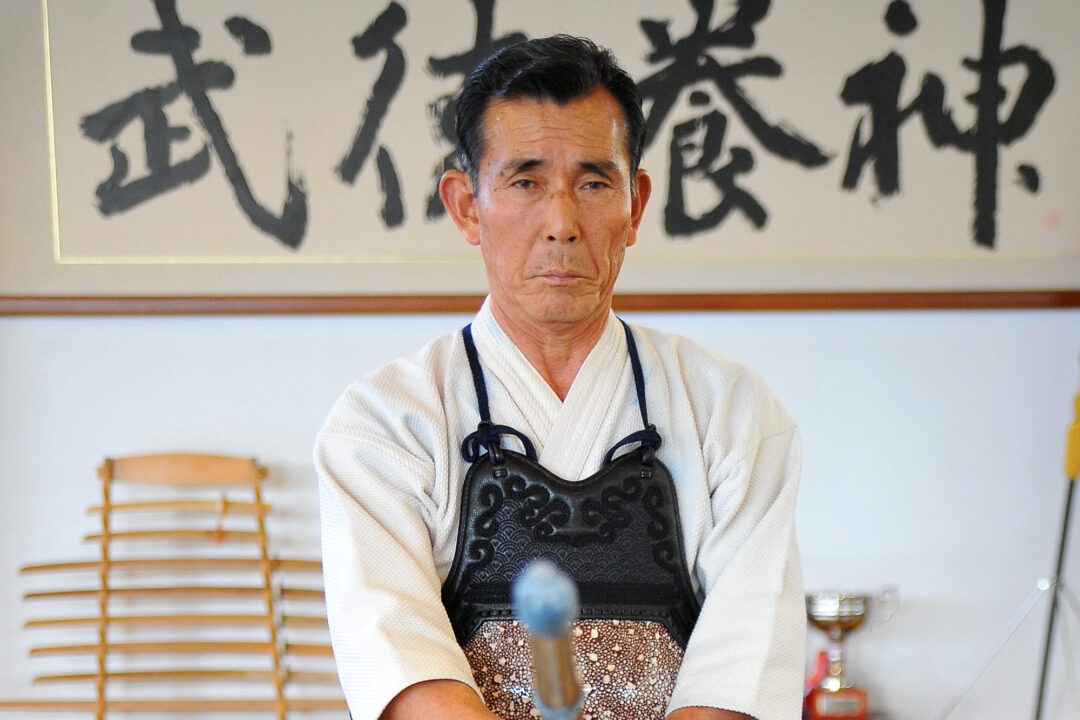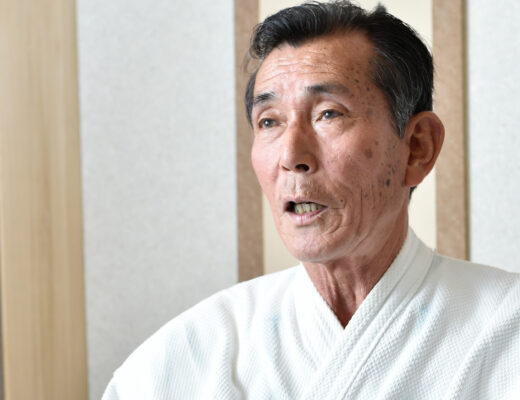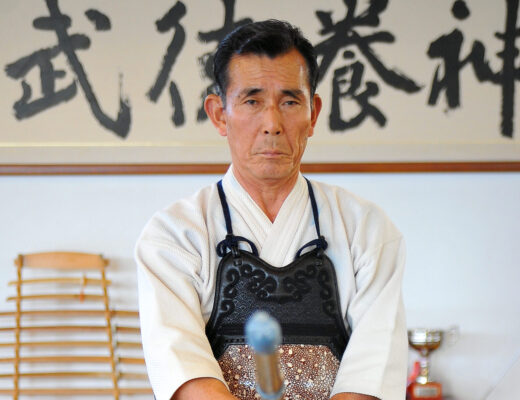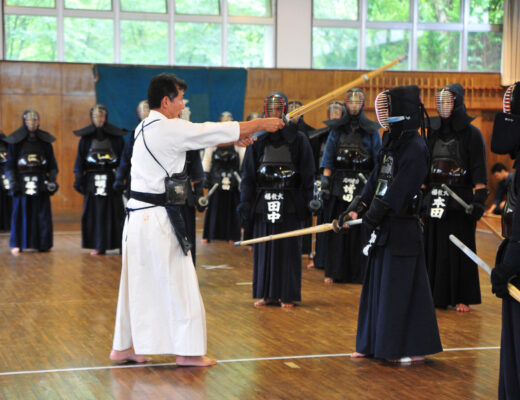Sumi Masatake, 8th Dan Hanshi
Born in Fukuoka Prefecture in 1943. After graduating from Chikushigaoka High School, he moved on to Fukuoka Gakugei University (now Fukuoka University of Education). After graduation, he worked as a high school teacher before returning to his alma mater, Fukuoka University of Education, as an assistant. From 1999 to 2002, he served as a permanent director of the All Japan Kendo Federation. He placed third in the 23rd Meiji-mura Kendo Tournament. He was the ladies’ coach of the Japanese national team at the 11th World Kendo Championships. He is the author of “Training Methods for Kendo by Age,” “Kendo is about basics,” and “Kendo for personal development”. Currently a professor emeritus at Fukuoka University of Education and the head of its Kendo club.
Meaning of Keiko
The word “Keiko” is used to refer to the study of ancient things, and in the field of Budo and other traditional Japanese culture, we are accustomed to say “Keiko” instead of “practice”. In other words, the techniques and spirituality that have been handed down to the present day should be included by improving oneself beyond the realm of learning, always keeping in mind the origins. It should be understood that it is not enough to simply learn and master skills, but also to reflect on oneself through the process of training and refining, and to work hard to accumulate human strength. On the other hand, “practice” and “training”, refer to the practical work of setting a certain goal and reaching it, and requires a rational process of improvement toward that goal.
In other words, it is important to consider that Keiko involves internal changes in the practitioner’s mind and spirit.
For example, when we consider Shiai or examination and if we take a result-oriented standpoint that places value only on winning or passing the examination, we will accept a negative outcome as a failure. On the other hand, if you take a process-oriented stance, where you consider both Shiai and examinations as part of your Keiko, you will see them as an opportunity to reflect on yourself.
If the mastery of Kendo techniques is seen as a means to win or pass examinations, there is a tendency to do formless Kendo, using techniques that are not in accordance with the principles, or to forget mastering the spiritual element because of the obsession with flamboyant techniques. In addition to the deterioration of technique, it is important to note that this can lead to a loss of respect for the spirit of Rei and honor, which is the most important thing for a Kendo practitioner to respect, and can even lead to neglecting Kendo as a spiritual culture that cultivates humanity through the mastery of technique.
In Keiko, it is essential to emphasize the spirituality (the workings of the mind and heart) that is contained in the Waza, and to reflect on one’s own state of being as a practitioner. In particular, due to the interpersonal nature of Kendo, there are many factors to learn about the spirituality inherent in the art of Kendo, and it is important to take seriously the fact that your opponent will give you the opportunity to learn about your own spirituality. It is important to understand that it is the seed of social and mutual acknowledgement.
It is natural to set the goal of winning Shiai in Kendo training, but during that process, we must face ourselves as the subject and try to improve the function of spirit and mind. I would like to deeply explore the meaning of what is taught in the saying, “Apply Tame and win through spirit, then perform the logical strike”. Kendo techniques are subject to various restrictions, and uncontrolled behavior is strictly discouraged. We must not forget that self-manifestation within restraint is the element of Keiko that leads to the cultivation of humanity. In order to seek beauty in Kamae and movement, brilliance in striking, and to get closer to perfection, it is essential to have a constant dialogue with oneself, as is meant by the phrase “Hyakuren Jitoku” (roughly: practice makes perfect).
The direction of Keiko
The rest of this article is only available for Kendo Jidai International subscribers!





